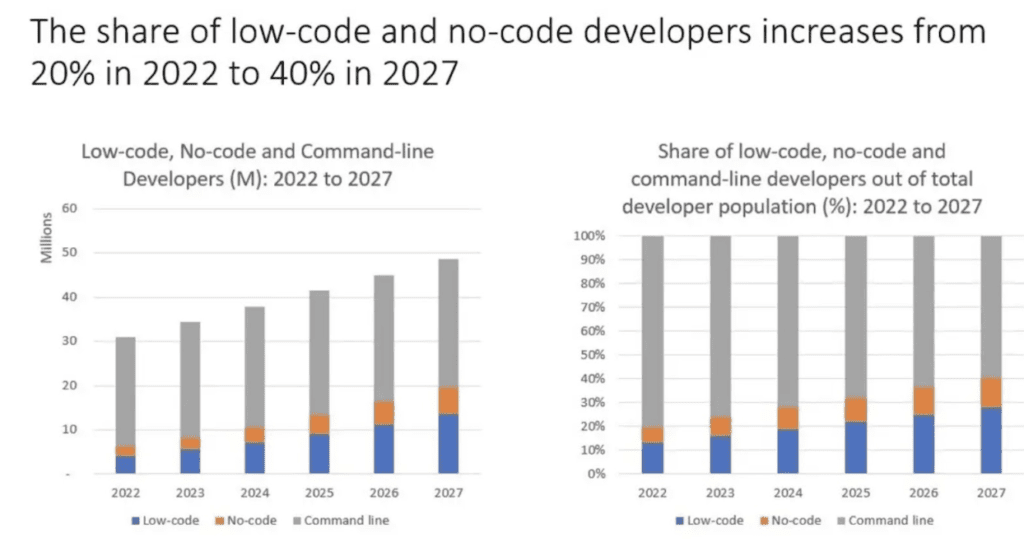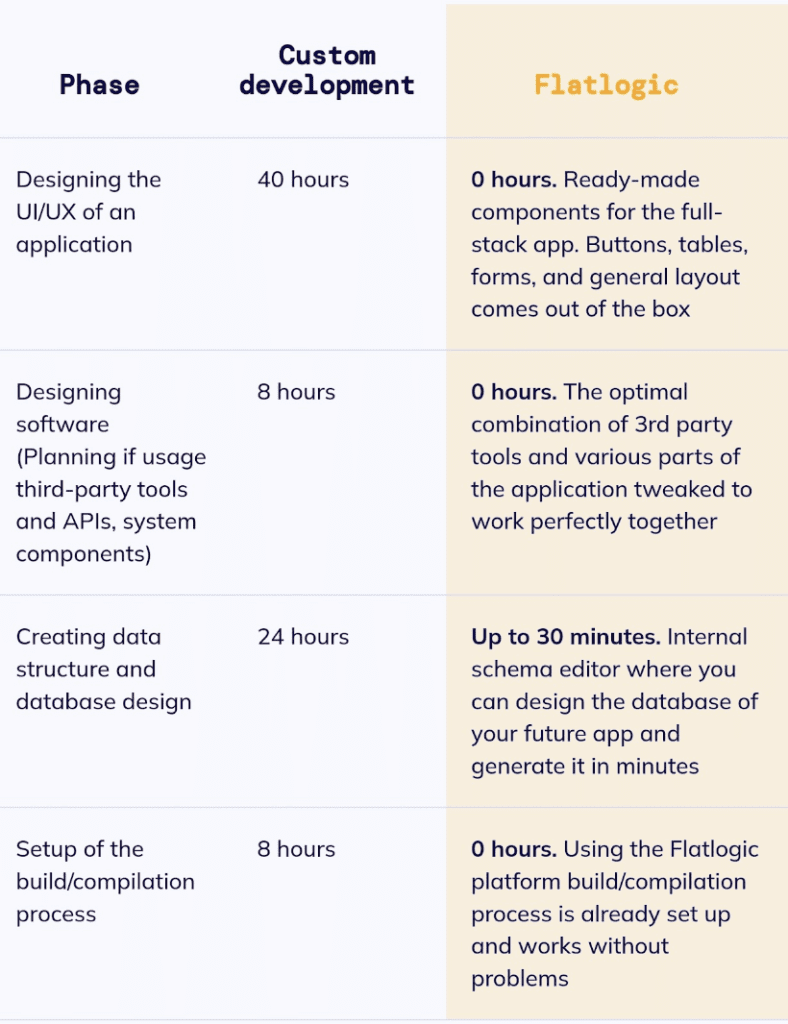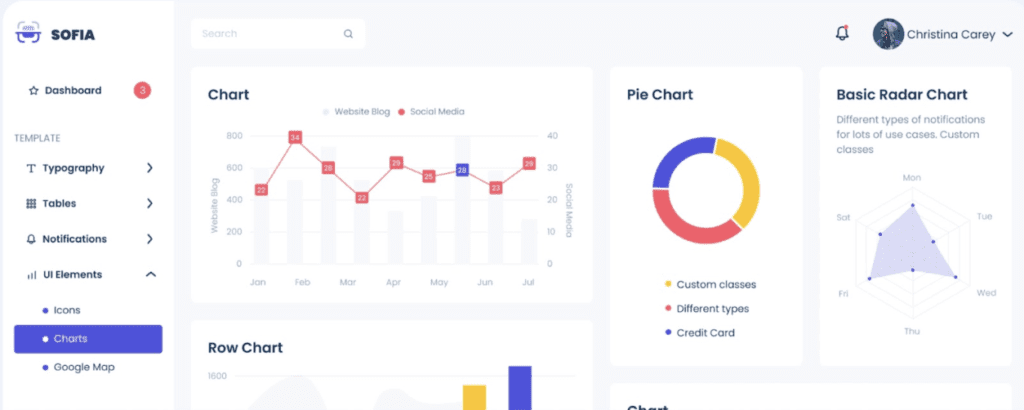TL;DR
- Low-code builds apps fast via drag-and-drop; good for quick, scalable releases.
- Flexible hybrid approach: combine low-code with high-code or no-code components.
- Startup-friendly: lowers cost, reduces hiring needs, and speeds time to market.
- Trade-offs: limited fine-grain control, less custom security, not ideal for huge bespoke apps.
- Gartner projects 70% of apps built with low/no-code by 2025, up from 25% in 2020.
Fact Box
The world is going crazy for low-code development. It’s perfect for building adaptable, scalable apps with ease, and tech companies love it. According to Gartner, 70% of apps developed by organizations will be made with low or no code tech by 2025. Compare this to just 25% in 2020, and you can see just how quickly the low code revolution is gathering pace.
What is low code development? What is the difference between high code and low code? Why is low code so popular? And is low code the future? Well, you can find the answers to some of these questions in our deep dive into low-code development. If you’re unclear about what low code is and where it’s used, this is the place to go.
Here, though, we’re going to take a closer look at why low code is so popular, how it differs from high code development, and whether or not it is, as many believe, the future of development. Ultimately, if you want to know the pros and cons of low code development and whether or not it’s right for your application, read on.
What is low code development?

Let’s start by clarifying what we’re talking about.
Low code development is the process of building software and applications using far less manual coding than traditional (or ‘high code’) methods require.
To minimize the amount of coding needed, developers will typically use a set of pre-programmed tools and techniques which can be slotted together to rapidly create versatile software.
Often, low-code development platforms will provide developers with a drag-and-drop interface in which pre-coded elements can be customized and combined to create a bespoke application very quickly.
Flatlogic is a low-code development platform. Using Flatlogic, developers can generate things like admin panels, CRM, CMS, internal tools, ERP, and data management tools in minutes. This makes it an incredibly fast and secure way to generate full-stack web apps for a fraction of the cost of coding them from scratch. 
It’s a popular solution, and growing more popular by the minute. It’s even being touted as a solution to developer shortages due to the Great Resignation.

But is low code always the right choice? Let’s take a look.
Is low code development always the right choice?
If we think of development in general as like construction, low code development is construction in which all the elements are pre-made. Rather than having to bake the bricks, mix the cement, carve shelving, and so on, ‘low code construction’ would simply involve putting premade units together in the required fashion. It’s a lot quicker and easier than having to do everything by hand.
To stick with this analogy for a moment, it’s notable that ‘low code construction’ is generally thought of as lower quality than the ‘high code’ version. If money and time were no object, and you had the choice of flat-pack shelving or bespoke shelving put together by a professional joiner from scratch, which would you choose?
Most would go with the bespoke, handmade option. But does this apply to low and high-code development, too?
Well, it honestly depends on your circumstances and what you’re looking for. Research shows that low-code development has a huge amount of promise for software applications and is immensely popular, but organizations should carefully consider their needs before opting for any low-code development solution.
If you are not sure what your needs are and how low code development could (or could not) help you in your situation, we’re going to spend the rest of this article diving into the pros, cons, and use cases of low code development.
What are the benefits of low code development?
Let’s take a look at why a growing majority of businesses are choosing low-code solutions for their apps and other software:
Speed

Low-code solutions are a great way to produce software quickly and with relative ease. Drag-and-drop formats are intuitive to use, meaning that you don’t need to hire or train a full development team. And building software through drag-and-drop is a lot faster than coding it entirely by hand.
In a world where things can change at the drop of a hat, speed is very important. So, a solution that lets companies get bug-free software out to market very quickly gives a huge advantage.
Great for mass-production
Low-code solutions like Flatlogic are great for mass-producing software. The same software template can be distributed widely and personalized by clients. Low code is quick, easy, and customizable – ideal for mass production.
For example, if you want to create an ACD that can be distributed across multiple companies, a low-code solution is ideal. What is ACD? It stands for Automatic Call Distributor, and it’s exactly the kind of tool that does the same thing across the board, but that companies may wish to add their unique touch to.
With a low code solution, you can create a basic ACD with customizable features that will do the job clients want without being too generic.
Can be used flexibly alongside no-code and high-code projects

Low code isn’t exclusive. A project doesn’t have to be entirely low code to succeed. If you want more customized elements in your project, you can create high-code pieces of software and slot them into your low-code program. This is sometimes known as ‘hybrid low code development’.
You can also use low-code solutions alongside no-code projects. While no code is typically a lot less customizable than low and high code, it is possible to weave low-coded elements alongside no-code programs.
The flexibility, versatility, and scalability of low-code solutions make it the perfect way to add a little more of your personal touch to low-code software and to take hours of mundane coding out of high-code projects.
Startup-friendly
Startups often want to create apps and software, but may not have the skills or resources needed to code everything from scratch. Similarly, startups will often want to scale their software as their business grows and user needs change.
A high-code solution is inaccessible under such circumstances, and no code lacks the scalability that startups need. But low code lets startups create their software and apps quickly and easily, without having to hire developers, and then scale and alter their software themselves as and when needed.
All in all, low-code solutions allow startups to get their ideas to market quickly and at a low cost without sacrificing any quality. It’s ideal for new companies that want to hit the ground running.

Intuitive to use
We’ve already spoken about how low-code solutions make software development quick and easy. The major reason for this is the intuitive interface and admin panel.
The admin panel of a solution like Flatlogic gives developers and other users control over what they’re producing. For example, users can quickly select tools and formats, alter settings, tweak things like privacy, and so on.
Using this admin panel, the software owners can control their software on an ongoing basis. For example, the admin panel enables the team to make changes and schedule updates without having to break open the core code and make manual adjustments. It’s fast, secure, and convenient, and ultimately makes for a much better experience on both the user and the developer sides of the software.
Closes the gaps between developers, management, and users
By making coding more accessible, low-code solutions can help to close the gap between developers, management, and users.
Often, the process of development is hindered by basic misunderstandings about what is and is not possible. Developers often find it hard to communicate their needs and limitations to managers and higher-ups, as there is a ‘language barrier’ between those who can code and those who cannot.
By effectively ‘translating’ the language of code into solid, demonstrable visuals, low code solutions help developers and management to communicate about what they need, what they want, and what they can do. Low code solutions give management team members valuable insight into what it takes to build the software they need, which in turn helps everyone to work together more productively.
This works the other way around, too. By giving an ‘end-user’ visual view of what the software will look like and how it will operate, low code helps developers to experience their builds from the user’s perspective. So, while high-code solutions often polish up the user experience as an afterthought, low-code platforms bake in positive user experience at all stages.
All in all, low-code solutions help to close communication gaps and bring all key stakeholders together in building an app that works for everyone.
What are the drawbacks of low code development?
Nothing is perfect, and there are some situations in which low code development may not be right for you. Let’s take a look at some of the cons of low code development.
Details may get missed

High-code development lets you go into absolutely every aspect of your software in extreme detail. While low code development is very versatile, it can’t provide that granular level of detail.
If the finer details are important to you, it’s worth noting that details may get missed, or be less clearly defined when you use a low-code solution.
You can often combine low and high-code solutions to add detail where it’s needed, but if you’re considering a fully low-code solution, you should be aware of this potential issue.
Security may not be as robust as with a high-code solution
Platforms like Flatlogic take security very seriously. Our development platform features the most up-to-date security features available, and we are constantly updating to make sure that our customers feel secure in their software.
However, some may feel more in control of security if they have built and are managing it themselves. Low-code solutions are less able to offer this kind of executive control.
Less customizable
Low-code solutions like Flatlogic are highly customizable and provide plenty of options for creating bespoke software.
That being said, if you want something with complex and/or unique specifications, you may need to get a bit more detailed with the code.
Let’s return for a moment to the ACD example we used earlier. An ACD application does the same thing across the board but is customizable just enough to let clients add their bespoke touches and features without having to delve too deep into the code itself.
However, if the client needs a more detailed solution for making calls, like a PBX or private branch exchange, a high-code solution may be more appropriate. A high-code solution can be specifically designed to connect with the client’s PBX hardware and to behave in exactly the way the client wants.
May not be universally applicable
Low-code solutions are compatible with a lot of operating systems, infrastructure, applications, and so on, but they may not be universal. This can become a problem if you work across widely differing domains.
For example, if you have a domain registration in the USA and a domain registration in Singapore, you may find that you have to use two different low-code solutions to make software that works for users in both domains.
While you can customize a high-code solution to plug into tools and infrastructure wherever needed, low-code tools may only work in a limited number of areas.
Requires more skill and knowledge than no-code solutions

Low code development is a lot easier than high code development. The visual, drag-and-drop format of most low-code solutions is intuitive, the admin panel is very accessible, and it doesn’t take long to work out what you’re doing.
That being said, low code development is not any code development. You do need to know at least a bit about coding to make it work effectively.
So, if you are completely in the dark when it comes to coding, you may be better off either hiring a developer or opting for a no-code solution.
The good news is that low-code solutions are relatively easy to learn. They can even provide a gateway into more advanced coding. So, if you would like to learn more about developing, learning a good low-code solution could give you the foundations you need to start writing more advanced code in the future.
When should you use a low-code solution?
Low code platforms are great for:
- Startups who want quick, scalable software solutions but lack the resources to hire a high-code development team
- Companies that want a higher level of understanding and communication between development and management teams
- Companies specializing in mass-production software which can then be customized by the end-user
- Anyone who wants to build software quickly and at a low cost for relative ease
- Anyone who lacks a significant amount of development skills, but still wants to be able to build a sophisticated and user-friendly piece of software
When shouldn’t you use a low-code solution?
Low code solutions are not suitable for:
- Companies that want a completely customized piece of software. While low code is very customizable, it can never be bespoke.
- Very large apps. It is often harder to go through the stages of testing and tweaking that extra-large apps need in low code than it is in high code. Further, larger apps typically need more complex code elements, which are harder to achieve in a low-code platform.
- Companies that want to be fully in control of their software.
- Anyone completely lacking in development skills. While low-code solutions like Flatlogic are relatively simple to learn, if you want to get working immediately and don’t understand coding at all, a no-code solution is probably better for you.
Conclusion

Low-code development platforms are taking the world by storm. By 2025, it’s predicted that the majority of commercial apps will be built using low-code solutions. Through solutions like Flatlogic, companies can build apps quickly, easily, and without the need for extensive coding skills.
However, as with anything, low code does have its drawbacks. It lacks the fine detailing capability of high code solutions, it doesn’t give the creator full executive control over the product and, unlike no-code solutions, low code does require at least a little knowledge of coding.
So, if you either want to create a large and detailed app that’s entirely customized to your precise specifications or if you want to quickly produce a less detailed, less customizable app that requires no coding skill, you will be better off going for high code or no code solutions.
For everything else, though, low code is pretty much perfect.
If you want to create flexible, versatile, bespoke software with ease and speed, check out Flatlogic. Using Flatlogic, you can generate full-stack web apps in minutes, and save yourself a huge amount of time and money on tedious coding!
Comments